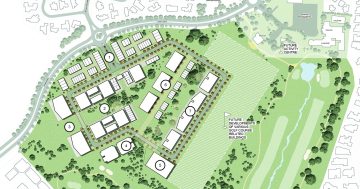
Minister for Planning and Land Management Mick Gentleman: “The community needs to quickly see what’s being built near them and to have their say on these developments.” Photo: File.
Development applications will remain on the planning website for five years and decisions will be published under proposed changes to the planning system announced today by Minister for Planning and Land Management Mick Gentleman.
The changes are part of a suite of proposals in draft legislation to make the system simpler, more flexible and outcomes-focused, and less of a box-ticking process.
The review comes after constant complaints about the rules-based planning system, which even Chief Planner Ben Ponton conceded was broken.
Mr Gentleman released a project update on the reforms underway to improve ACT planning, but which are not likely to be implemented until 2023.
Proposed changes in the new Planning Bill, which will be released for community and industry engagement in early 2022, also introduce the category of ‘significant development’ where developments are likely to require greater consideration of design and environmental impacts and new processes for ‘Territory Priority Projects’.
Also proposed are a simplification of the Environmental Impact Statement (EIS) process, removing EIS exemptions, and introducing pre-decision advice on development applications.
The object of the Act would also be expanded to be inclusive of wellbeing, ecological sustainability and liveability principles, and recognising the knowledge, traditions and culture of the Ngunnawal people as the traditional custodians of the land.
There would also be more efficient and transparent development assessment pathways and decisions.
The update highlights the ACT Government’s work over the past year, including community and industry consultation by district, the drafting of new legislation, and ongoing technical planning.
It also signals some of the work continuing into next year.
The Planning Bill will be the project’s first key reform rolled out for community consultation.
Mr Gentleman said that draft district strategies would also be released for further consultation in mid-2022 after consultation on the Planning Bill has closed.
“We anticipate that people will be most interested in what’s happening in their district,” he said.
“Earlier this year, we heard from Canberrans across the territory, from Gungahlin to Tuggeranong, about what they loved most about their district. This input is being considered – along with feedback given over many years of planning and development application processes – in our district strategy development.
“We want designers and developers to think about how each project fits in with the characteristics of the district and adds to a local area, how it is environmentally sustainable, and how it functions for the people that will use it.”
Mr Gentleman said the government was also considering how people interact with the planning system and how improvements to IT systems and detailed guidance material can support the implementation of changes in 2023.
“It’s important to make interacting with the planning system as easy as possible. The community needs to quickly see what’s being built near them and to have their say on these developments,” he said.
“I want to hear from as many Canberrans as possible as we shape the future of our city’s landscape. I encourage everyone to sign up for updates on the project’s YourSay page and to continue to provide feedback on this important reform project across 2022.”
Further information about the ACT Planning System Review and Reform Project can be found on the ACT Planning website.
Engagement opportunities and information about the consultation, including the District Panning Report, can be found on the ACT Government’s YourSay website.
Original Article published by Ian Bushnell on Riotact.








